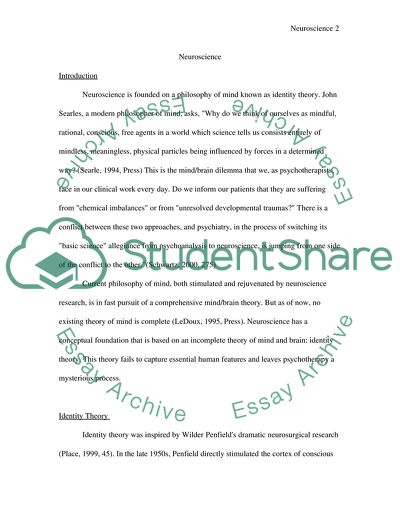Cite this document
(Neuroscience Essay Example | Topics and Well Written Essays - 1750 words, n.d.)
Neuroscience Essay Example | Topics and Well Written Essays - 1750 words. https://studentshare.org/medical-science/1712014-what-has-neuroscience-research-told-us-about-the-way-the-brain-processes-fear-make-references-to-both-human-and-animal-research
Neuroscience Essay Example | Topics and Well Written Essays - 1750 words. https://studentshare.org/medical-science/1712014-what-has-neuroscience-research-told-us-about-the-way-the-brain-processes-fear-make-references-to-both-human-and-animal-research
(Neuroscience Essay Example | Topics and Well Written Essays - 1750 Words)
Neuroscience Essay Example | Topics and Well Written Essays - 1750 Words. https://studentshare.org/medical-science/1712014-what-has-neuroscience-research-told-us-about-the-way-the-brain-processes-fear-make-references-to-both-human-and-animal-research.
Neuroscience Essay Example | Topics and Well Written Essays - 1750 Words. https://studentshare.org/medical-science/1712014-what-has-neuroscience-research-told-us-about-the-way-the-brain-processes-fear-make-references-to-both-human-and-animal-research.
“Neuroscience Essay Example | Topics and Well Written Essays - 1750 Words”. https://studentshare.org/medical-science/1712014-what-has-neuroscience-research-told-us-about-the-way-the-brain-processes-fear-make-references-to-both-human-and-animal-research.


